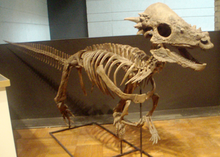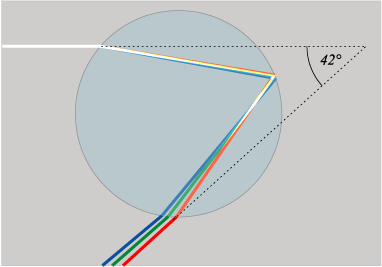Chris Cook of NovusTV interviews Iain Fraser, Science Facilitator at Science World about Extreme Dinosaurs. Source: Youtube Channel (NovusTV)
Not everyone can truthfully say that they work amongst a collection of giant robotic dinosaurs. However, I actually can live up to that claim, as I work part-time as a Science Facilitator at Science World during the weekend.
The Extreme Dinosaurs exhibition currently at Science World hosts 18 species of dinosaurs in animatronic form (essentially robots that look and move in a very lifelike fashion), most of which are life-sized. All of these dinosaurs have strange characteristics that were used to help them survive during the Mesozoic Era; these range from horns, plates, and crests to even feathery down, bony tail clubs, and thick skulls.
Pachycephalosaurus skeleton on display at the Royal Ontario Museum. Source: Wikimedia Commons
The actual purpose of some of these adaptations is still up for debate. For example, some scientists hypothesize that Pachycephalosaurus may have butted heads like rams to show dominance while looking for mates due to their thick skulls. Others think that the skulls were too fragile for the dinosaurs to butt heads, and aimed for the side of their competitors’ bodies instead.
Even with fossil evidence, there are still many adaptations that paleontologists have not been able to come to a consensus as to what their purposes were. There are some characteristics that can’t be verified from the fossil record, like the colour of dinosaurs and the sounds that they make. These still remain a mystery, and the best that scientists can do is to make an educated guess.
With many new species of dinosaurs being discovered within the past few years, the scientific method of making and testing hypotheses is alive and well in the field of paleontology.



